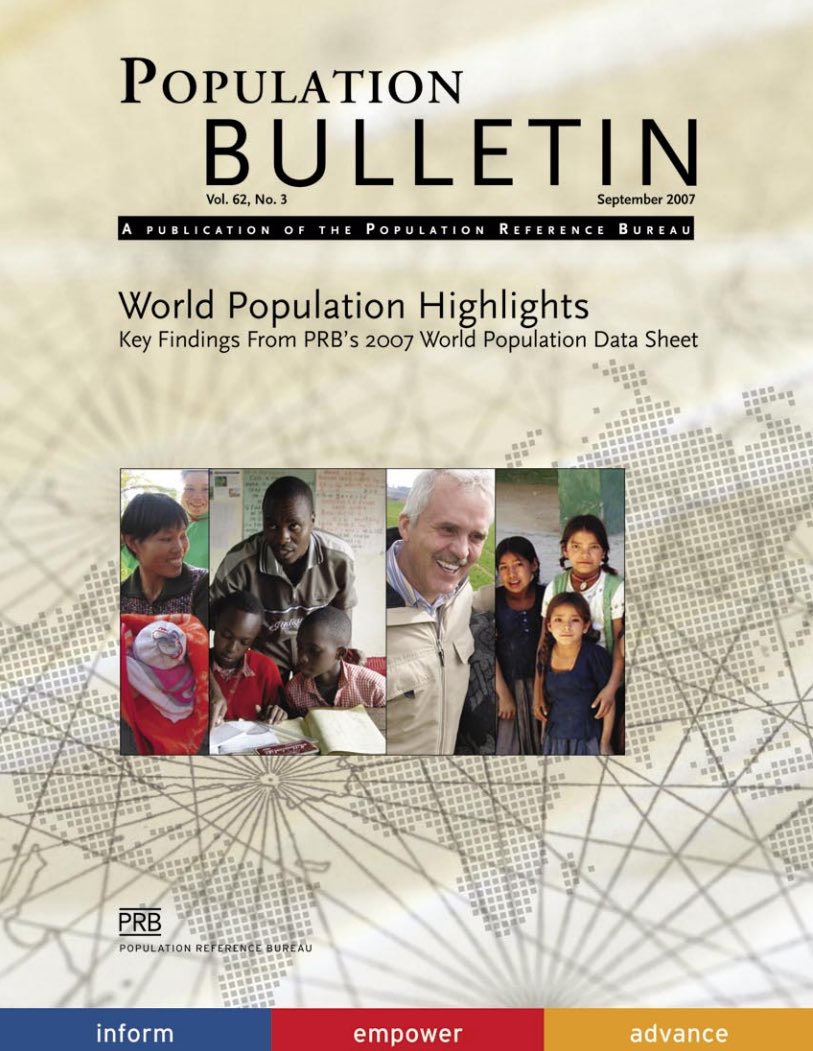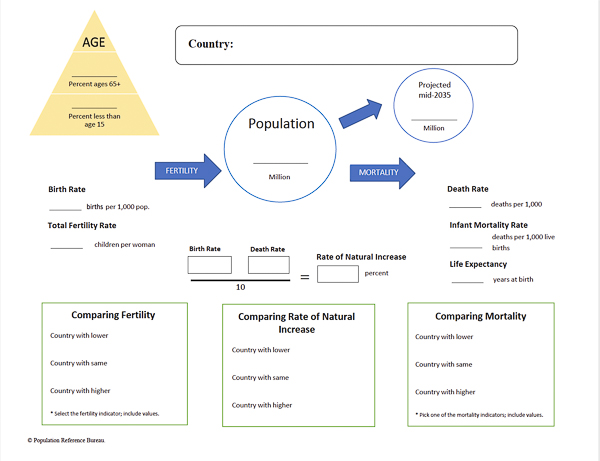Population Bulletin, vol. 62, no. 3: World Population Highlights 2007–Migration
2007) In 2005, about 191 million people—3 percent of the world's population—were international migrants, according to UN estimates.

2007) In 2005, about 191 million people—3 percent of the world's population—were international migrants, according to UN estimates.
(2009) One in every 10 children in the United States had no health insurance in 2007, and the cost of insurance to families and employers is rising, according to a new report by the Institute of Medicine. America's Uninsured Crisis: Consequences for Health and Health Care is an independent assessment of published studies and surveys and provides new research on how lack of coverage affects U.S. children and families.
(2004) During the last two decades, agricultural expansion, logging, development, and other human activities caused the deforestation of more than 120,000 square kilometers each year.

Invisible care work has become a collective issue, and the data confirms it: It's time to integrate into our vision of growth what actually keeps our societies going.

Attempts at immigration reform should address issues that have been with us, in various guises, for at least a century.

Mark Mather from our U.S. Programs team looks back at key population trends since he joined PRB in 1998.
(2009) The U.S. population is projected to increase over the next four decades, but according to new supplemental projections from the U.S. Census Bureau, the rate of increase depends largely on future trends in international migration.

Project: PACE: Policy, Advocacy, and Communication Enhanced for Population and Reproductive Health
PRB’s World Population Data Sheet is an excellent reference and data analysis tool. Teachers are encouraged to have their students use the Data Sheet for a variety of topics and activities.